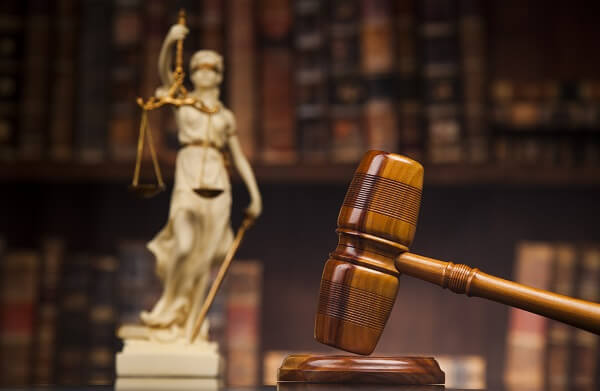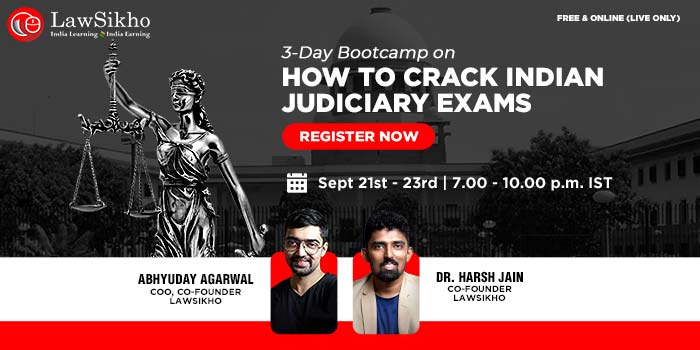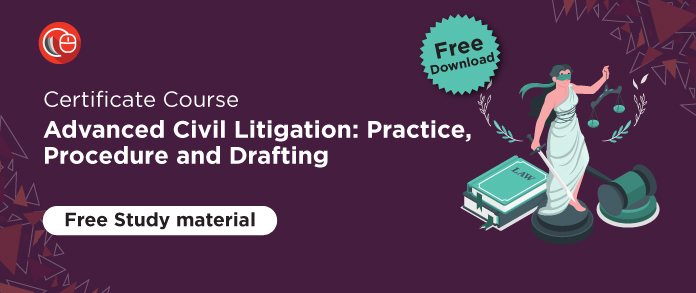

This article is written by Shiwangi Singh, a law student from Banasthali University. This article talks about basic human rights as well as how a human right gets converted into a civil right. It deals with various civil rights movements held in India and how legislation was introduced for civil rights violations.
it has been published by Rachit Garg.
Table of Contents
To lead a meaningful and dignified life, one needs to get access to certain rights so that they can carry out their basic actions and fulfil their demands and needs which are required for their survival. One is always entitled to use certain rights, and this entitlement is known as human rights. Human rights can be defined as moral entitlements that are applicable and available to every human being by virtue of their human condition, irrespective of their origin, nationality, caste, or gender. Some rights can never be snatched away from anybody, which are naturally given to people, naturally born rights. No matter how superior someone is, they can never cut off someone from using these rights.

Civil rights are the protections and privileges of personal power and rights given to all citizens by law. Civil rights are the rights that are bestowed by the nation on its citizens who are within its territorial boundaries. When the government or the state gives their will to bring certain human rights into action and provides them with a legal authorization, then that right is said to be a civil right. These rights ensure equal opportunities for everyone, irrespective of their race, religion, or gender. Civil rights vary from time to time and they also differ from place to place because different places have different forms of administration, and therefore, rights are suitably provided to them.
Philosopher John Locke argued that natural rights to life, liberty, and property should be converted into civil rights and protected by the sovereign state. Other philosophers have argued that people acquire rights as an inalienable gift from the deity and at a time when nature was formed before the government could start to rule.
Civil rights are a set of laws established by law that protect the freedoms of individuals from being wrongly denied or limited by governments, social organisations, or other private individuals. Examples of civil rights include the rights of people to work, study, eat, and live where they want. Turning a customer away from a restaurant solely because of his or her race is a civil rights violation.
Human rights and civil rights hold some differences, like:

This was a massive civil rights movement in South Africa that fought against racial segregation known as apartheid. This movement started in the 1940s and intensified in the 1950s and 60s. At that time, black people were deprived of many social needs based on their colour. They didn’t even have the right to vote. The Major Black party in South Africa- African National Congress came into power and Nelson Mandela became the first Black president of South Africa, in 1994.
The British ruled India for around 200 years and exploited us economically for the betterment of their nation. The Britishers had liberal traditions in Britain but believed that backward nations like India needed to depend on a much stronger nation for their survivability, and hence the principles of liberty were not applicable in India. They had full control of the people and took over every business in India. They not only drained India economically but also deprived the people of their basic rights to equality, justice, and dignity. Nationalists and social reformers like Raja Ram Mohan Roy and Mahatma Gandhi were concerned with the denial of civil liberties. They led many movements to take up the issue of civil liberties. Various incidents from history show how masses of people came together either to eradicate a senseless practice or to enforce their basic rights. Some of them are:
Civil disobedience simply means not standing by the sayings of the government because one does not find it for the well-being of the people. One requires passive resistance, refusing to obey the commands of the government. It has been a major tactic and philosophy of nationalist movements in Africa and India.
In India, the Civil Disobedience Movement was started by Mahatma Gandhi by breaking the salt law by producing salt from seawater. It was a peaceful and non-violent procession, but it didn’t stand with the unjust policies of the British Government. The movement marked its beginning by Salt Satyagraha on 12th March 1930 led by Mahatma Gandhi accompanied by 78 other trusted volunteers, in which he started a march called ‘the Dandi march’ starting from Sabarmati Ashram at Ahmedabad to Dandi, a village on the western sea-coast of India, at a distance of about 385 km from Ahmedabad. They reached Dandi on 6th April, 1930. After reaching there, Gandhi made salt from the seawater and broke the salt law because it was only under British authority that salt was manufactured. They had an absolute monopoly over it.
This movement impacted the whole nation, and similar marches were led by different leaders in other parts of the country. It united the nation as one against British rule.
One of the less talked about civil rights movements in India was led by B.R. Ambedkar. It was held against the practice of the Brahmin’s so-called upper caste, who suppressed the lower castes. It was a fight within the different classes of the country, it wasn’t about any external influence but an Indian harming another Indian.
Thousands of Dalits rallied behind Dr. Ambedkar, using water from public tanks, which was prohibited for them, at Mahad in Maharashtra. The Dalits struggled for their right to have access to the very basic need of mankind, i.e. water, which shows that it was indeed an uncivilised society at that time. It was India’s first civil rights movement. It wasn’t just a movement for a class of people, but a civil rights movement.
Fundamental rights are divided into six categories namely- Right to Freedom, Right to Equality, Right against Exploitation, Right to Freedom of Religion, Cultural, and Educational Rights, and the Right to Constitutional Remedies. These fundamental rights are present in Part III, from Article 12 to Article 35 of the Indian Constitution.
Fundamental Rights are the basic human rights in the Constitution of India guaranteed to all citizens. Fundamental rights are enforceable by the courts. These rights are available to every citizen without any discrimination based on race, religion, gender, etc.

Article 12 – It defines the composition of ‘State’ which includes the Government of India, the Parliament of India, the government and legislature of each state, and all other local authorities within the territory of India that are under the control of the Government of India.
Article 15 – It has the following provisions:
The state shall not discriminate against anyone based on these grounds.
Article 16 – There shall be equal opportunities for every citizen in matters of public employment.
Article 17 – This Article talks about the abolition of untouchability.
Article 18 – This Article deals with the abolition of titles.
ARTICLE 19 – This Article talks about the protection of rights like freedom of speech, expression, etc.
Article 20 – This Article talks about protection from offences.
Article 21 – This Article talks about the protection of life and personal liberty.
Article 22 – This Article states about the protection against arrest and detention.
Article 23 – This Article talks about the prohibition of human trafficking and forced labor.
Article 24 – This Article mentions that children below the age of fourteen shall not be forced to work in hazardous environments like mining or railways.
Article 25 – This Article mentions freedom of conscience and freedom to profess and propagate the religion of one’s choice.
Article 26 – This Article mentions freedom to manage religious affairs.

Article 27 – This Article states that no person shall be forced to pay taxes for the promotion and maintenance of any particular religion.
Article 28 – This Article states the prohibition of religious instruction in educational institutions wholly maintained by the state.
Article 29 – This Article deals with the protection of interests of minorities
Article 30 – This Article deals with the rights of minorities to establish and administer educational institutions.
Article 31 – This Article deals with the fundamental right to property, which has been abolished after the 44th amendment, 1978.
Article 33 – This Article empowers the Parliament to restrict the fundamental rights of the members of the armed forces, parliamentary forces, police forces, and intelligence agencies.
Article 34 – It provides restrictions on fundamental rights while martial law (military law) is in force.
Article 35 – It empowers the Parliament to make laws on fundamental rights.
Fundamental rights play a very pivotal role because they are important for the attainment of the full intellectual, moral, and spiritual status of an individual. Civil rights are the primary requirement in a democratic world, and it works against systems like dictatorship. The freedom struggle of India was for the implementation of civil rights.
Everyone has this right to live peacefully in a dignified manner, and the government has formed many laws to protect this right.
One can marry the person of their choice and start a family. This right is significant for the continuation of the human race.
Every government allows its citizens the opportunity to get an education because educated people can actively participate in the workings of society and government.
The government does not force anyone to follow any particular religion; they are free to choose their religion and abide by it.
Everyone has the right to express their thoughts without being restrained by any means.
Citizens have the right to get their thoughts and expressions printed in newspapers and periodicals to reach a greater number of people.
Every citizen has the right to seek justice from the court if they feel any right of theirs is being restrained or obstructed by anyone.
Every citizen has the right to move freely throughout the country and abroad.
Civil rights are the primary requirement in a democratic world, and it works against systems like dictatorship. The Indian struggle for freedom was for the implementation of civil rights.
Civil rights and civil liberties are quite similar, but the difference lies in the action of the government and how they implement it.
Civil liberties are the freedoms guaranteed to the citizens or residents of a country by an overriding legal covenant, such as the U.S. Bill of Rights. It tends to restrict the government in specific areas like freedom of speech, and expression. For example – if a person is stopped from expressing his or her views on a matter, then he can file a complaint against the official who restrained him and can caution the government that no one can restrain him from exercising his rights while a civil right ensures equal opportunities for everyone, it does not discriminate against anyone on grounds like employment, housing, education, etc.
For example – In the U.S, everyone has the right to marry. This is a civil liberty that cautions the government that they can’t stop anyone from marrying. But if the government disagrees with issuing a marriage certificate to a couple then it restrains the civil right of the person and he can now take action because he has the full right to get a certificate.
Examples of civil rights include the right to vote, equal access to public education and affordable housing, the right to a fair trial, and the right to use public facilities.
Any offence that causes a threat to people belonging to the ‘protected category’ is known as a civil rights violation. Civil rights violations occur when the rights or freedoms of a person are taken away or discriminated against based on race, color, gender, age, nationality, disability, or sexual orientation.
Some examples of civil rights violations are:
It talks about negative employment outcomes because of sex or gender, which means someone being passed over for a promotion, being passed over for a raise, being paid less than other co-workers, not being given responsibilities, being assigned extra work or tasks or transfers, or changes in job duties.
Sex discrimination means treating someone unfavorably because of their sex or sexual orientation, like transgenders. It is unlawful to mock a person for their sexual identity.
Whenever a right is violated, a proper remedy has to be available for the injury caused by it. A proper legal procedure is adopted by our country for the redressal of civil rights violations. The upper-caste Indian society has always been very rigid with its caste system and harmed the people of the lower caste. The practice of untouchability was to a greater extent in early Indian society, where the lower caste people weren’t allowed to use public toilets, tanks, or wells, and were not allowed to enter temples by the so-called high caste people. To eradicate such useless practices, the Indian government came up with ‘The Protection of Civil Rights Act of 1955.’
The social gaps created by the people of the upper caste by using such beliefs have always affected the people of the lower caste. It made them feel isolated, degraded, and violated. This Act however, helped them to raise their voice for their rights and lead a normal life like any other person in society. This Act not only helped the lower caste but also made people aware of the social injustices happening in society. With the introduction of this Act, these social injustices were curbed and made Indian society a better place to live in.
Civil rights are the backbone on which a democratic country functions. It is an essential component of democracy. These rights confer certain power to the citizens to help themselves from any wrongdoing. History has shown us how people suffered when their rights were suppressed, which eventually led to extreme exploitation. Their rights make them strong and responsible enough to take up action for themselves. The legislation that introduced the punishments imposed by the government for civil rights violations also helped people to use their rights effectively, therefore safeguarding their rights.
Article 18 abolishes all titles and prohibits the state from giving titles to anybody, whether a citizen or a non-citizen. However, military and academic distinctions are exempted from the prohibition.
Article 21 states that no person should be deprived of his or her life and personal liberty except according to a procedure laid down by the law.
Students of Lawsikho courses regularly produce writing assignments and work on practical exercises as a part of their coursework and develop themselves in real-life practical skills.
LawSikho has created a telegram group for exchanging legal knowledge, referrals, and various opportunities. You can click on this link and join:
Follow us on Instagram and subscribe to our YouTube channel for more amazing legal content.
